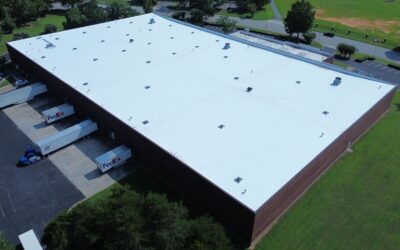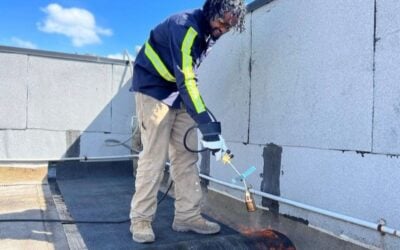When disaster strikes and your commercial or industrial roof suffers unexpected damage, prompt action is crucial to minimize further issues. Emergency roof repairs are essential to prevent water damage, structural instability, and costly repairs. Whether caused by a storm, fallen debris, or other unforeseen events, understanding how to handle emergency roof repairs can significantly impact the protection and longevity of your commercial roof. Here’s a guide to help you navigate the process effectively.
1. Assess the Situation Safely
The first step in managing an emergency roof repair is to assess the damage. Safety should always come first. If it’s safe to do so look for signs such as missing roofing materials, leaks, or sagging areas. For severe damage or hazardous conditions, avoid climbing onto the roof yourself. Instead, contact a professional who can safely and accurately evaluate the situation.
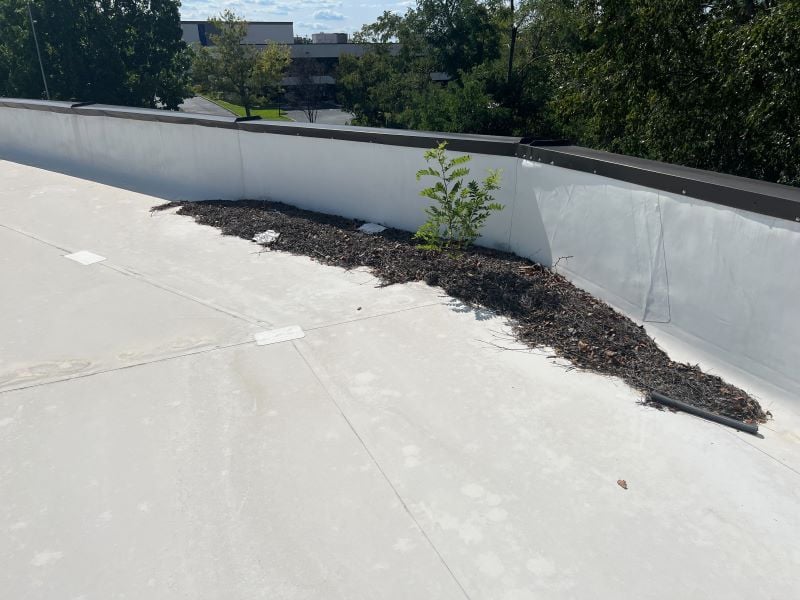
2. Implement Temporary Fixes
If you identify a leak or minor damage that requires immediate attention, implement temporary fixes to prevent further water damage. Here are some temporary measures for commercial and industrial roofs:
Cover Leaks: Use a tarp or heavy-duty plastic sheeting to cover areas where water might be entering. Secure the cover with weights or ropes to ensure it stays in place.
Seal Small Leaks: For minor leaks, applying roofing tape or sealant can provide a temporary barrier against water ingress. Follow the manufacturer’s instructions for optimal results.
Remove Debris: If debris, such as branches or equipment, is causing damage, carefully remove it to prevent additional strain on the roof.
These temporary measures are not substitutes for professional repairs but can help protect your facility until a roofer can address the issue.
3. Contact a Professional Roofer
Even if you manage a temporary repair, contacting a professional roofer as soon as possible is crucial. Roofers have the expertise and tools to properly assess and repair damage. They can also identify underlying issues that may not be immediately visible. When selecting a roofer, consider:
Licensed and Insured Professionals: Ensure they have the necessary licensing and insurance to perform repairs safely and legally.
Reputable Companies: Check reviews and ask for recommendations to find a trustworthy contractor.
Emergency Services: Look for roofers offering 24/7 emergency services to address urgent repairs promptly.
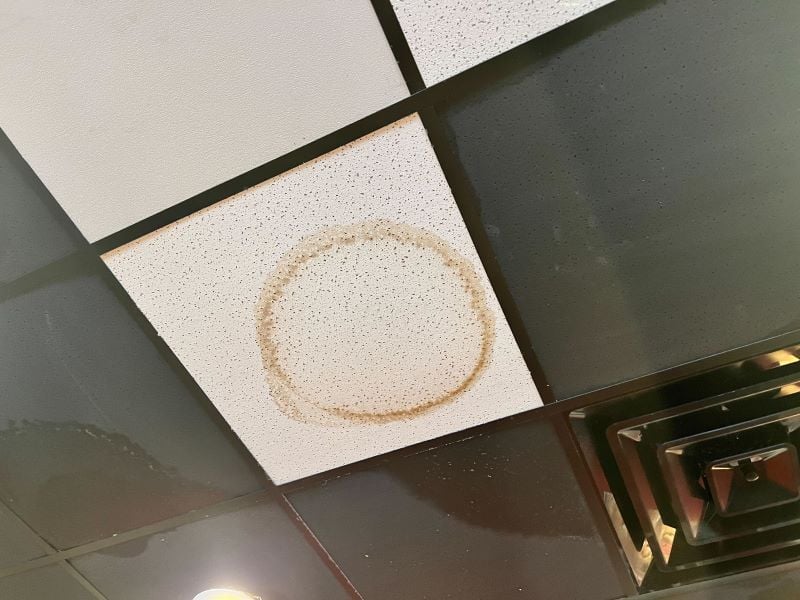
4. Document the Damage
Before any repair work begins, document the damage for insurance and record-keeping purposes. Take clear, detailed photos of the affected areas, including both interior and exterior views. This documentation will be valuable for filing insurance claims and will assist your roofer in assessing the damage.
5. Understand Your Insurance Coverage
Review your commercial property insurance policy to understand what is covered in the event of roof damage. Many policies cover repairs resulting from sudden and accidental events, such as storms. However, coverage can vary, so clarify what is included. Contact your insurance provider to report the damage and initiate a claim if necessary.
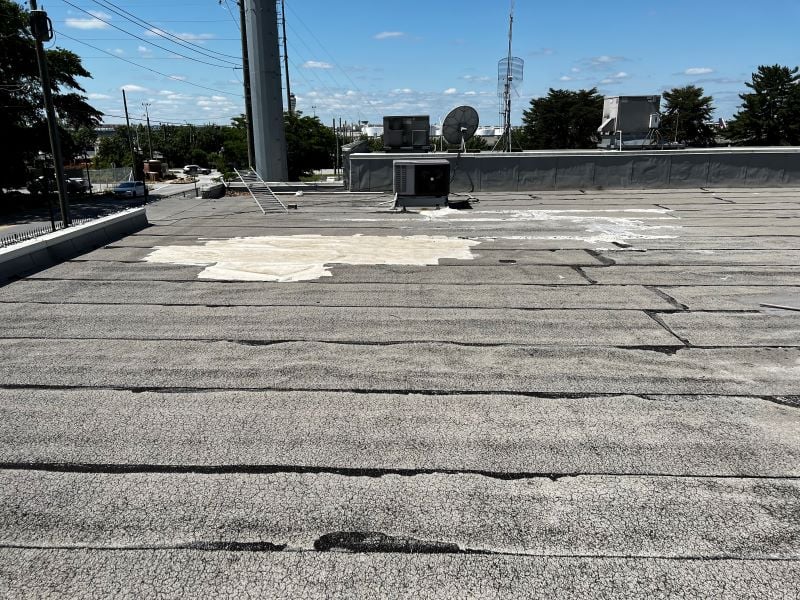
6. Prevent Future Damage
After repairs are completed, take steps to prevent future damage. Regular roof maintenance can help identify and address issues before they become emergencies. Consider:
Routine Inspections: Schedule professional inspections at least once a year to detect potential problems early.
Gutter Maintenance: Ensure gutters are cleaned regularly to prevent water buildup that can lead to roof damage.
Debris Management: Regularly inspect and clear debris from the roof to reduce the risk of damage.
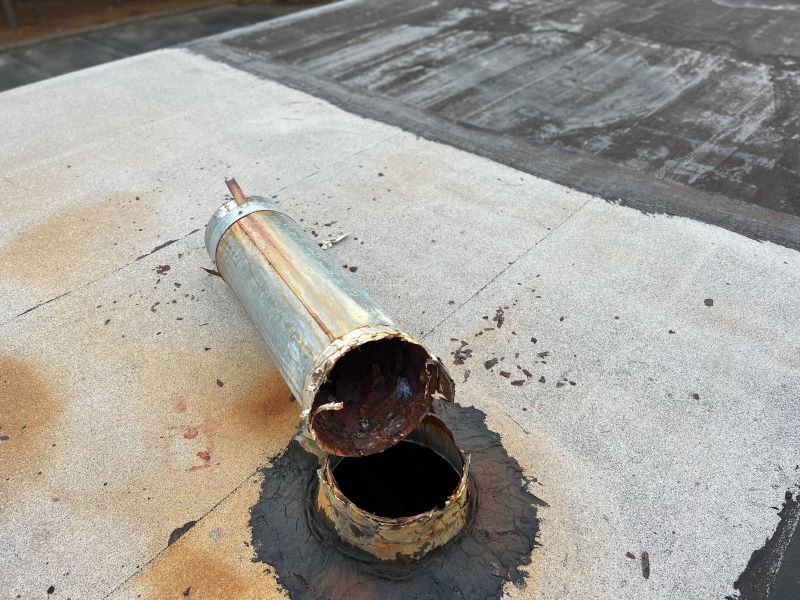
Conclusion
Emergency roof repairs can be challenging, but knowing how to respond can mitigate the impact of damage. Assess the situation carefully, implement temporary fixes if needed, and promptly contact a professional for a thorough repair. Document the damage for insurance purposes, understand your coverage, and take preventive measures to safeguard your facility in the future. By staying informed and proactive, you can effectively manage roof emergencies and maintain the integrity of your commercial or industrial property.
Remember, your roof is a critical component of your building’s defense against the elements, and addressing any issues quickly is key to maintaining its functionality and protecting your investment.


